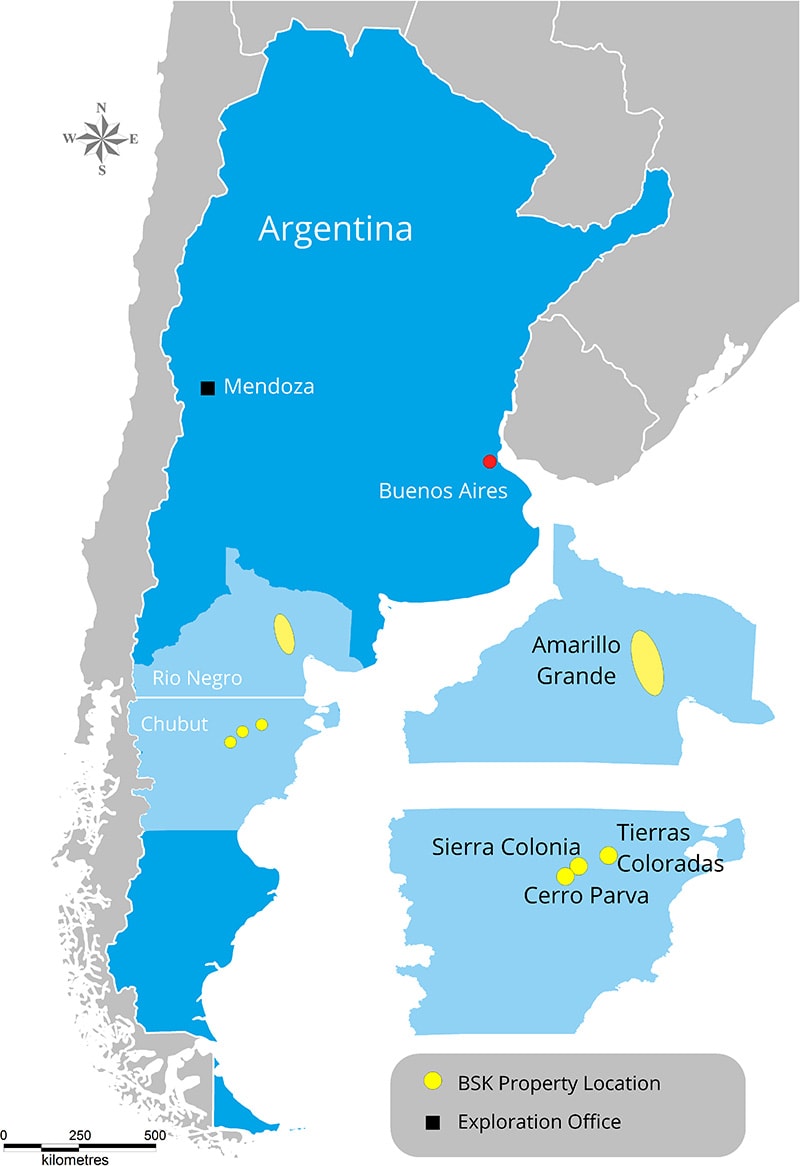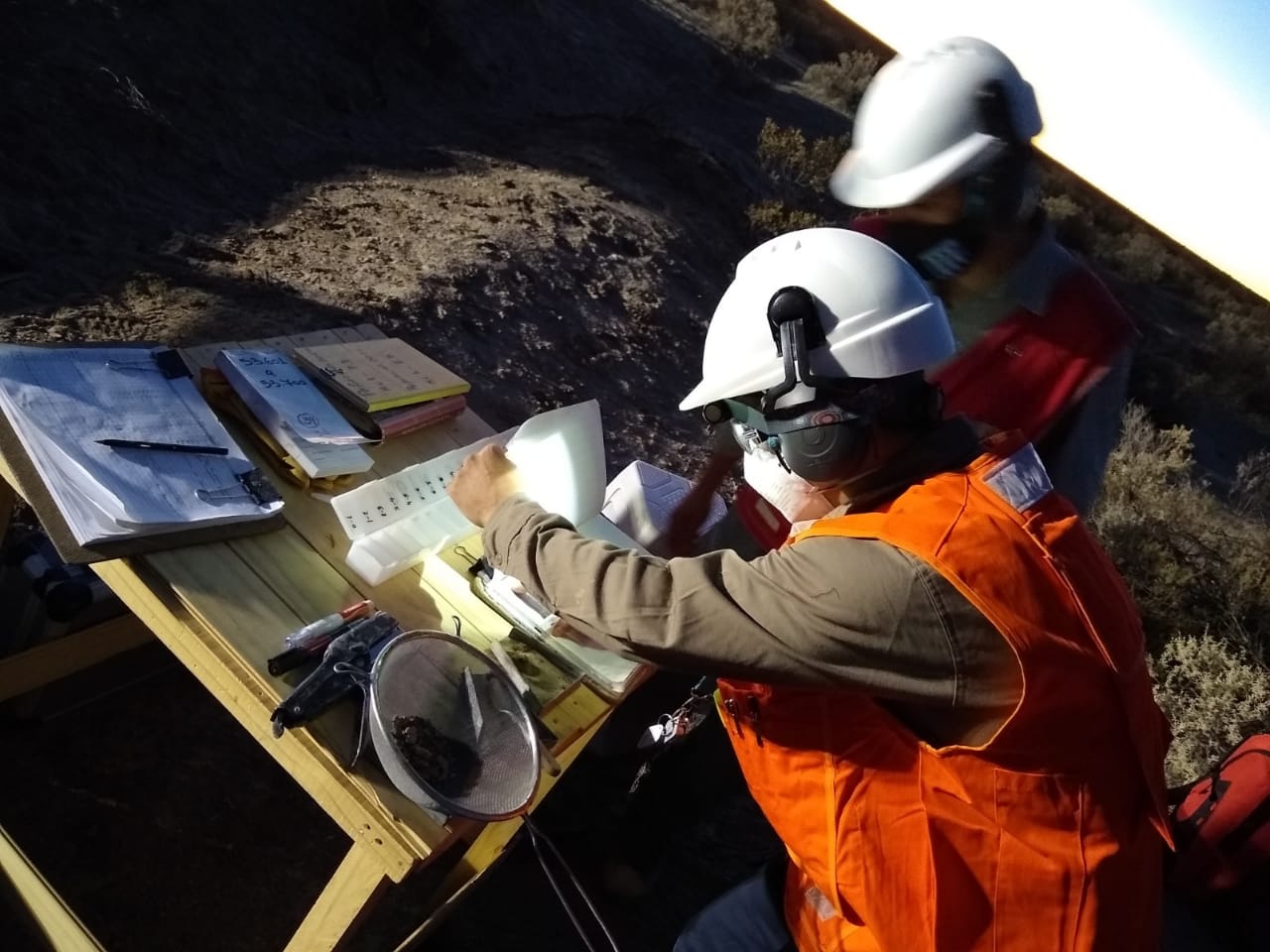Blue Sky Uranium – Poised to benefit from the nuclear industry resurgence

By Luke Holland
The uranium bull’s roaring rampage has taken the globe by storm with uranium spot prices soaring more than 20% to date in 2023. Uranium has been the standout commodity this year, dwarfing other metal markets. Currently sitting at $66/lb at time of writing, earlier this month,
uranium prices reached $72.75, their highest point since the pre-Fukushima disaster era of 2011. The nuclear surge is attributed to reduced uranium inventories and supply issues. The ongoing war between Russian and Ukraine poses a threat to trade, heightening concerns, coupled with the demand for clean, stable energy sources have seen the uranium spot price soar, sparking a renewed interest in uranium mining projects globally. (IG, 2022)
A tight supply situation exists within the uranium space, as supply has slumped in 2022. Moreover, more than 60% of global output comes from less politically reliable nations, including Kazakhstan, Uzbekistan, Russia, Niger and China (World Nuclear Association). This creates concerns over stability of supply; the recent coup in Niger being a prime example which resulted in the French nuclear company Orano SA suspending uranium ore processing in the jurisdiction due to logistical challenges caused by international sanctions resultant from the coup. (Bloomberg)
In response to the current global energy security crisis and tightening supply the uranium prices and many uranium mining stocks have surged. The Global X Uranium ETF, the largest uranium-focused exchange-traded fund, has seen a 31% increase year-to-date. Meanwhile, Canada’s first uranium ETF, the Horizons Global Uranium Index ETF, has experienced a more substantial gain, rising over 45%, according to LSEG data (London Stock Exchange Group).
 Seeking to take advantage of the booming uranium market is Blue Sky Uranium Corp. (BSK-TSXV; BKUCF-OTCQB; MAL2-FSE). The company offers a unique opportunity for investors to get involved with an advanced uranium exploration project in an expansive region of Argentina open to new discoveries. Boasting not only uranium, the project also offers vanadium potential, a critical, strategically significant metal globally, with applications in steel and battery production, essential for the green transition. Argentina is one of two South American countries which implement nuclear derived energy into its national grid work. Presently, Argentina has three operational nuclear plants, which combine to supply 10% of the nation’s energy demand. Blue Sky Uranium’s goal is to become Argentina’s leading domestic supplier of uranium as well as an international supplier. This objective aims to support Argentina’s existing nuclear infrastructure and contribute to its nuclear industry’s growth.
Seeking to take advantage of the booming uranium market is Blue Sky Uranium Corp. (BSK-TSXV; BKUCF-OTCQB; MAL2-FSE). The company offers a unique opportunity for investors to get involved with an advanced uranium exploration project in an expansive region of Argentina open to new discoveries. Boasting not only uranium, the project also offers vanadium potential, a critical, strategically significant metal globally, with applications in steel and battery production, essential for the green transition. Argentina is one of two South American countries which implement nuclear derived energy into its national grid work. Presently, Argentina has three operational nuclear plants, which combine to supply 10% of the nation’s energy demand. Blue Sky Uranium’s goal is to become Argentina’s leading domestic supplier of uranium as well as an international supplier. This objective aims to support Argentina’s existing nuclear infrastructure and contribute to its nuclear industry’s growth.
Under the guideship of Argentinian mining hall of famer Joe Grosso, Blue Sky Uranium has made significant discoveries in the Rio Negro Province in southern Argentina. Their Amarillo Grande project (AGP), covering a 145-kilometre trend with 245,000 hectares of mineral rights, has three major properties: Ivana, Anit, and Santa Barbara. The project area is semi-arid and flat lying, with access to power, port and rail. Mineralisation is chiefly observed within conglomerates and sandstone units and is located at or near surface.
 In 2019, the company completed a Preliminary Economic Assessment (PEA) for the AGP project, focused on the flagship Ivana deposit. The PEA, completed in accordance with NI 43-101, indicates that Ivana has an inferred mineral resource of 22.7 million pounds of U308 and 11.5 million pounds of V205, (28.0 million tonnes averaging 0.037% U308 & 0.019% V2O5 at a 100 ppm uranium cut-off) with the potential to be recovered in a surface mining operation with a 13-year mine life resulting in a total production of 17.5 million pounds of U308. The average life-of-mine all-in-sustaining cost (AISC) from the study is US$18.27 per pound (U308), potentially making its operating costs among the lowest globally. (Disclaimer: The PEA is preliminary in nature and is based solely on Inferred Mineral Resources that are considered too speculative geologically to have economic considerations applied to them that would enable them to be categorized as Mineral Reserves. Mineral Resources that are not Mineral Reserves do not have demonstrated economic viability and there is no certainty that the PEA will be realized).
In 2019, the company completed a Preliminary Economic Assessment (PEA) for the AGP project, focused on the flagship Ivana deposit. The PEA, completed in accordance with NI 43-101, indicates that Ivana has an inferred mineral resource of 22.7 million pounds of U308 and 11.5 million pounds of V205, (28.0 million tonnes averaging 0.037% U308 & 0.019% V2O5 at a 100 ppm uranium cut-off) with the potential to be recovered in a surface mining operation with a 13-year mine life resulting in a total production of 17.5 million pounds of U308. The average life-of-mine all-in-sustaining cost (AISC) from the study is US$18.27 per pound (U308), potentially making its operating costs among the lowest globally. (Disclaimer: The PEA is preliminary in nature and is based solely on Inferred Mineral Resources that are considered too speculative geologically to have economic considerations applied to them that would enable them to be categorized as Mineral Reserves. Mineral Resources that are not Mineral Reserves do not have demonstrated economic viability and there is no certainty that the PEA will be realized).
Blue Sky has an on-going process design testing program underway for material from the Ivana deposit. The first set of tests detailed in the Company’s PEA reported an overall process plant recovery rate of 85% for uranium, with 89% leach feed preparation recovery and 95% subsequent alkaline leach circuit recovery. For the latest optimized bulk sample tests, uranium recovery for the alkaline leach stage was 96%. The next step underway in the test work program involves assessing membrane filtration media.
Blue Sky is optimistic on the potential for discovering additional uranium and vanadium resources within the AGP project. Thorough geological review and reinterpretation has uncovered four new target areas, resembling the mineralisation style of the uranium-endowed Ivana deposit. Blue Sky’s current program aims to uncover further uranium mineralisation showcasing the district’s growth potential, with the goal of identifying a cluster of deposits.
Blue Sky’s most recent exploration campaign is a 1,200m reverse circulation (RC) drilling program focussing on its Ivana East priority target situated 10 kilometres to the east of the Ivana deposit within the southernmost area of the AGP project. The primary objective of this program is to assess the presence of uranium mineralization in high-porosity conglomerates and sandstones associated with a basal channel environment. This mineralisation style mirrors the model established for the Ivana deposit, where uranium is found in poorly or unconsolidated sediments with organic matter overlying basement rocks.
 Additionally, Blue Sky has engaged external consultants to assess how the current mineral resources and the PEA will be affected by the 3,346 metres of drilling across 350 RC drill holes and additional density measurements conducted in 2022. The primary objectives are to better define the deposit’s boundaries and potentially elevate the category of mineral resources from inferred to indicated.
Additionally, Blue Sky has engaged external consultants to assess how the current mineral resources and the PEA will be affected by the 3,346 metres of drilling across 350 RC drill holes and additional density measurements conducted in 2022. The primary objectives are to better define the deposit’s boundaries and potentially elevate the category of mineral resources from inferred to indicated.
In a recent interview, Blue Sky CEO Nikolaos Cacos stated, “We are looking forward to the near-term completion of the work by our consultants, which will help us map the steps forward for the project. With a starting inferred resource of 22.7 million lbs. of U3O8 at Ivana, we have the potential for one of the largest uranium resources in South America. We plan to continue our work with the goal of building the Amarillo Grande project into an integral part of Argentina’s nuclear initiatives.”
The positive bullish trend in the uranium market appears set for notable further growth.
Data insights from global investment manager Sprott, indicates that the price of uranium has surged by 25.49% year-to-date, while uranium stocks have gained 21.1%. This performance surpasses that of the leading 500 companies in the US, which have seen an 18.73% increase, and significantly contrasts with the broader commodities index, which has experienced a 6.01% decline. (Stockhead).
Given the market’s limited depth consistently falling short of global reactor uranium needs, coupled with strong demand, Sprott anticipates further growth potential for the commodity. The uranium market’s ten-year downtrend indicates supply won’t be able to match the present demand. As nuclear reactors exclusively rely on uranium, this results in a highly responsive and captive market, rendering uranium an enticing investment prospect.

